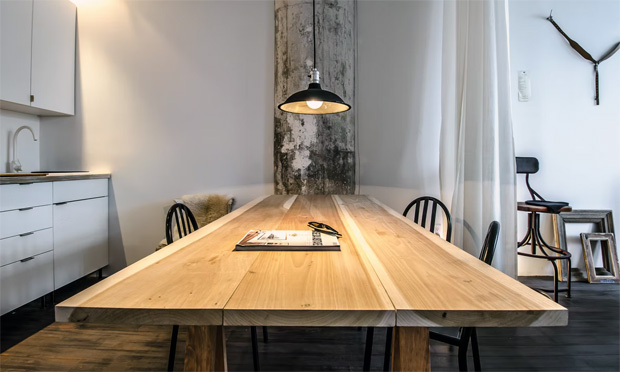Finding Good Quality Furniture

Finding Good Quality Furniture
I’m one rickety flat-packed bookcase away from throwing in the towel completely and living a minimalist life with one shelf and whatever fits on it. Let’s be honest, though; I would probably choose a cheap version of a shelf that an incredibly cool Instagram star has. It would be about a third smaller than I thought it would be and only capable of holding a glass of water and my hopes for a tidy and stylish house before collapsing.
Finding the sweet spot between design, functionality, and an affordable price point is not easy. Throw quality into the mix, and it can make you want to cry before trying out that minimalist lifestyle one more time!
While I may not know all the secrets to finding the perfect piece of furniture, I can give you a rundown of what to look for when it comes to finding well-made furniture that will last longer than my shelf of Instagram fame.
- Where can you find well-made furniture?
The good news is that you have no shortage of options for hunting down quality furniture. Furniture shops with a physical location still exist.
Most of them also have an online presence, allowing you to shop and order from the comfort of your own home while still offering the option to visit and try things out in real life. US Furniture Direct, for example, provides both online shopping convenience and in-store experiences for a hands-on look at their offerings.
Facebook marketplace is another great option that lets you search both individuals and businesses for items that take your fancy. Like any social media interaction, be mindful of your safety if meeting up with someone and try to use services like PayPal to better protect yourself from unscrupulous sellers.

- What is it made of?
When it comes to wooden furniture, premium materials such as hardwood are your friend. Plywood and composite materials are cheap and easy to form, making them the material of choice for cheap furniture. While it can be versatile, and you will find it in some design led furniture, due to its flexibility, the majority of furniture made from it will not last longer than a few years.
Hardwood, on the other hand, can easily last for decades. Drawers with hardwood bottoms are unlikely to fall through, and tables made from it can be refinished easily with just a few swipes of a sander and some furniture oil. If you are going to drop some serious cash on wooden furniture that is not made from hardwood, proceed carefully and ask yourself what it is you are paying for.
- How is it held together?
Furniture building is an art. Do you know what is not art; sticking things together with glue and nails? The joins on a piece of furniture are very telling of its quality. Ideally, you would want to see joints used to keep a piece of wooden furniture together. Glue, nails and screws are a quick fix, but they are not as structurally sound as a proper wooden joint. If you see a piece made with mortise and tenon joints, snap it up, as it will be incredibly strong and long-lasting.

- Does it wobble?
I give all potential wardrobe and bookcase purchases the wobble factor test. Basically, I give it a wobble and see how much it wobbles when there is nothing in it. I understand that once they are full, there will be extra strength, but if it’s shakier than San Francisco, It needs to really wow me before I’m going to buy it.
The reason for the wobble test is to give me an idea as to how well a piece of furniture will stand up to being moved. If something wobbles easily, it can be a sign that it is prone to warping or the joints are not particularly strong. Both of these can mean that the item will be easily damaged if it is not moved carefully enough.
- Can it be repurposed?
How does the new piece of furniture you have your eye on fit into the world of reusing, repurposing and upcycling? If you do find a piece of good quality furniture, you are hopefully going to keep it around for a while. But, if you decided on a complete change of interior design or moved to a space that couldn’t fit it, would you be able to find another use? Nursery furniture is a prime example of this. A baby’s changing table needs to be sturdy and high quality, but once your little one is out of nappies, could it have another use, such as a chest of drawers for an older child or perhaps a bookcase?
Upcycling is all the rage at the moment, with people actively searching out good quality furniture that they can bring a new lease of life to. If you are creatively minded yourself, you might even be able to give something a fresh lick of paint and sell it on.
Flatpack furniture will always have a place in my heart, but after doing the research that resulted in this post, I feel more confident in knowing how to spot furniture that is or is not well made. Being aware if I could repurpose or resell an item holds the most importance.
What about you? Let me know your tips for finding good quality furniture in the comments.
Guest Article.




